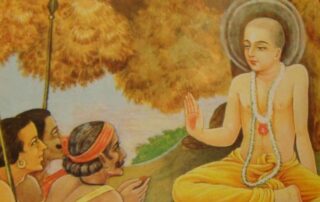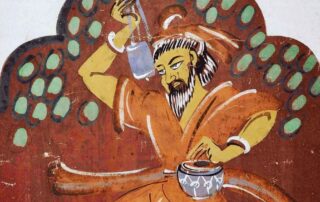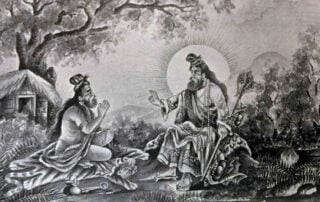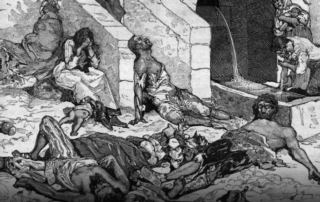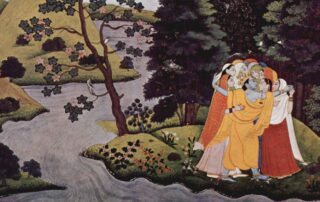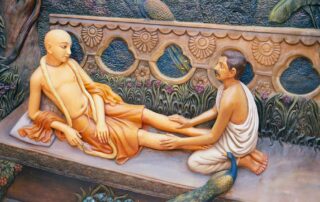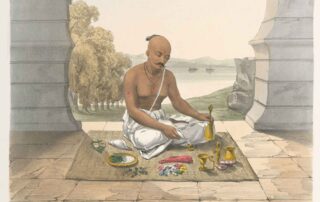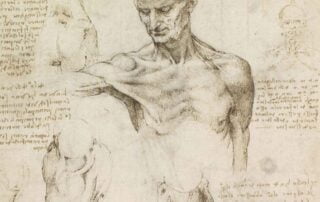Articles by Śrīla Bhaktivinoda Ṭhākura
Discover the profound wisdom of Śrīla Bhaktivinoda Ṭhākura, through our vast collection of his written articles that explore various aspects of Gauḍiya Vaiṣṇavism. Gain valuable insights into the path of bhakti-yoga as you delve into the teachings of this celebrated vaiṣṇava luminary. Our user-friendly interface makes it easy to access and explore the works of Bhaktivinoda Ṭhākura by topic.
Articles by Śrīla Bhaktivinoda Ṭhākura
Discover the profound wisdom of Śrīla Bhaktivinoda Ṭhākura, through our vast collection of his written articles that explore various aspects of Gauḍiya Vaiṣṇavism. Gain valuable insights into the path of bhakti-yoga as you delve into the teachings of this celebrated vaiṣṇava luminary. Our user-friendly interface makes it easy to access and explore the works of Bhaktivinoda Ṭhākura by topic.
Ācāra u Pracāra (Good Conduct and Preaching)
This article, Ācāra u Pracāra (Good Conduct and Preaching) was first published in Sajjana Toṣaṇī Vol 4. Issue 2 in 1892. Bhaktivinoda Ṭhākura writes about the three types of devotees in relation to proper personal conduct and preaching and explains who is the best.
Bāula-matera Vicāra (A Discussion on the Beliefs of the Bāulas)
Bāula-matera Vicāra (A Discussion on the Beliefs of the Bāulas) was published in 1892 in Sajjana Toṣaṇī, Vol. 4 Issue 4. A reader had sent five queries in regards to the ideology of the Bāulas (a popular sect of pseudo-Vaiṣṇavas in Bengal) and Bhaktivinoda Ṭhākura replied to these questions in brief. A year later, in 1893, the Ṭhākura wrote his famous Bāula Saṅgīta, a series of 12 songs exposing the debauchery and philosophical deviations of the Bāulas.
Sampradāya Praṇālī (The Sampradāya System)
Sampradāya Praṇālī (The Sampradāya System) was first published in Sajjana Toṣaṇī, Vol 4, issue 4 in 1892. In this article Bhaktivinoda Ṭhākura explains how Indians at that time were being influenced by western scholars and going against the ancient concept of the sampradāya system.
The Worldly Difficulties of a Vaiṣṇava (Vaiṣṇavera Vyavahāra Duḥkha)
This short article, Vaiṣṇavera Vyavahāra Duḥkha (The Worldly Difficulties of a Vaiṣṇava) was published in the 10th Volume, 2nd Issue of Sajjana Toṣaṇī in 1898. Herein, Bhaktivinoda Ṭhākura explains the difference between the difficulties encountered by a Vaiṣṇava and those of a non-Vaiṣṇava. Towards the end of the article he speaks about the Bubonic Plague which broke out at the end of 1897 and was still a huge threat in Kolkata at the time of writing.
Śrīmad Bhāgavatam Daśa Mūla
In 'Śrīmad Bhāgavatam Daśa Mūla', Bhaktivinoda Ṭhākura explains the ten major philosophical points of Gauḍīya Vaiṣṇavism as found in the Bhāgavata Purāṇa.
Śrī Caitanya-caritāmṛta Daśa Mūla
In 'Śrī Caitanya-caritāmṛta Daśa Mūla' Bhaktivinoda Ṭhākura explains the ten major philosophical points of Gauḍīya Vaiṣṇavism as found in the Caitanya-caritāmṛta of Śrīla Kṛṣṇa Dāsa Kavirāja Gosvāmī.
Viṣaya u Vairāgya (Sense enjoyment and Renunciation)
In this article, Viṣaya u Vairāgya (Sense enjoyment and Renunciation), first published in the 4th Volume of Sajjana Toṣaṇī in 1892, Bhaktivinoda Ṭhākura describes the gradual development of renunciation within one who lives in this world. He gives the example of Śrīla Raghunātha Dāsa Gosvāmī, and also warns against immature renunciation.
Brāhmaṇatva o Vaiṣṇavatva (Brāhmaṇism and Vaiṣṇavism)
In this article, "Brāhmaṇatva o Vaiṣṇavatva (Brāhmaṇism and Vaiṣṇavism)", from Sajjana Toṣaṇī Vol. 4, Bhaktivinoda Ṭhākura explains the unique relationship between Brāhmanism and Vaiṣṇavism, and how these two things are interdependent.
What is a human? (Manuṣya ki?)
In this short essay, Manuṣya Ki? (What is a Human?) from Sajjana Toṣaṇī, Volume 2, Bhaktivinoda Ṭhākura demonstrates the futility of modern science in understanding the subtle body and the spiritual body.
Sādhu-vṛtti (Following in the footsteps of the previous ācāryas)
Sādhu-vṛtti (Following in the footsteps of the previous ācāryas) is imperative in bhakti. In this article from Vol.10 of Sajjana Toṣaṇī, Bhaktivinoda Ṭhākura describes the two types of sādhus - the householders and the renunciants - and the qualities that they should cultivate.

